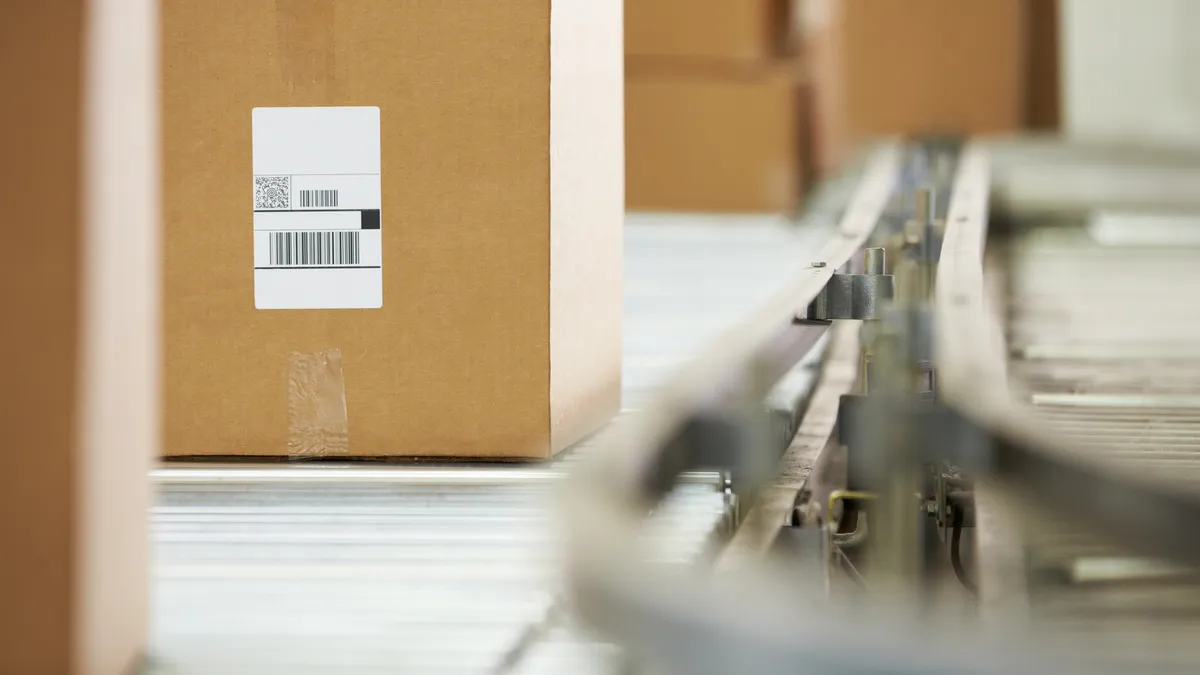This story is part 3 of a three-part series on e-commerce and parcel logistics. Read all the stories here.
A step-change in consumer behavior will inevitably spiral through the supply chain, and e-commerce is no exception.
"The package market is likely to remain tight in 2021 providing support for pricing gains at UPS and FedEx," wrote UBS analysts in mid-December in a perfunctory summary of what may be a driving force in retail supply chains for the year.
If parcel carriers maintain their advantage, which experts and analysts predict they will for some time, the dynamic between shippers and carriers will continue to shift. In a world where parcel carriers choose which volume they carry in and out of peak season, some shippers will win capacity and some will lose. And "shipper of choice," a concept more often referring to in the trucking market, could be used in the small parcel supply chain too.
Post pack, pre carrier
Operational capacity after orders are packed but before they are handed over to carriers will be a differentiator for shippers looking to secure volume flexibility in their next contract, according to Tray Anderson, logistics and industrial lead for Cushman & Wakefield in the Americas.
Pre-sorting packages or driving them directly to carrier sort centers, though not always helpful this past peak, could become more of the norm — potentially creating yet another line of separation between mature e-commerce players and the rest.
Target has already started down this road. The retailer opened its first post-store sortation center during the third quarter to consolidate orders picked and packed in dozens of stores in the Minneapolis area.
Retailers with the size and skill of Target, Walmart and Amazon may be able to build post-pack infrastructure and capacity, but others will not. "No one else can afford to do that kind of thing. And those players are buying shipping startups," said Rick Watson, CEO of RMW Commerce Consulting.
Anderson posited that third-party depots may become more common, consolidating pickups for shippers without enough volume to stand up their own.
Proactive supply chain management wins again
Size may not be the only differentiator. Consistent, predictable volume may become more valuable than simple scale — adding value and importance to demand forecasting capabilities and technologies for shippers.
Carriers are no longer concerned about filling trucks and vans, and the contracts that traditionally focused on the minimum acceptable parcels will fall out of favor.
Carriers may instead create stipulations that account for unplanned demand, Glenn Gooding, president of iDrive Logistics, explained.
"Carrier contracts — they're really not contracts. They’re pricing agreements built around trying to hold a shipper accountable for the full portfolio of spend," Gooding said.
Bed Bath & Beyond reported earlier this month that FedEx’s surcharges increased the retailer's shipping costs by roughly 20% YoY in the final quarter of 2020, cutting 80 basis points from its margins.
E-commerce has traditionally been a downward force on retail profitability. COVID-19 brought the kind of volume uptick that can sometimes increase efficiency, but it also brought mitigation and safety requirements, not to mention staffing issues and widespread sickness, that increased costs.
Retailers like Bed Bath & Beyond and Macy’s, which largely admit to having a long way to go to get to a modern supply chain in general, may lack the agility to adjust their networks to better serve carriers.
And not only could service from the major carriers be harder to obtain for these retailers, but the cost may also be harder to bear — potentially leading the e-commerce leaders to build their leads and the laggards to fall farther behind.














